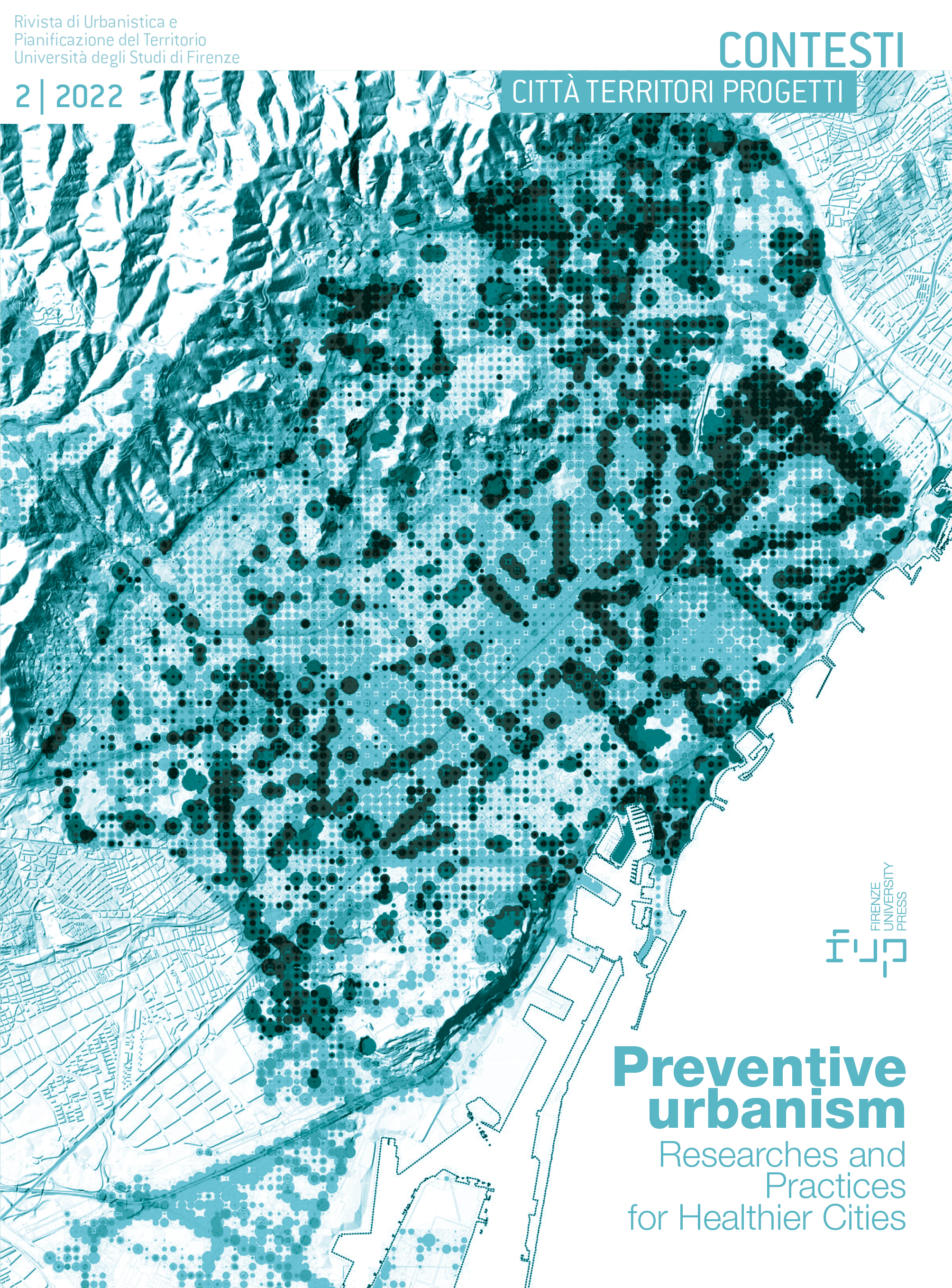Published 2022-12-31
How to Cite
Abstract
Throughout this long emergency period, urban and territorial pilot projects in different countries have shown how Covid-19 has been an accelerator for those cities that already had structurally questioned livability, urban and environmental quality, quantity and quality of public space, sustainable mobility, accessibility to services and territorial welfare, acting accordingly and experimenting with new strategies, tools and interventions. It is clear now that we need to rethink the concept of what we consider “healthy,” reinterpreting that cyclical relationship between the person, the city and the environment in order to overcome different ideas of health. However, challenges in the field of urban planning and health have changed: from poor ventilation and organic waste disposal capacity as the primary reason for the spread of epidemics, to contemporary issues of air and light pollution, overexposure to noise, sedentary lifestyles, chronic diseases, overweight, stress, extreme socioeconomic inequalities. Many of these issues are directly related to urban and spatial development patterns: the auto-centric mobility paradigm, poor-quality food accessibility, excessive urban density (or extreme fragmentation), energy production and supply systems, new forms of consumption and distribution, tourism, all dynamics exacerbated by climate change, the digital revolution and possible pandemics. Today more than ever, it seems relevant to ask how cities and territories can finally address the health issue in a structural way, shifting from a curative to a preventive approach, from an idea of individual health to a collective health.
Downloads
References
Calabi D. (1979). Il “male” città: diagnosi e terapia. Roma: Officina Edizioni.
Colomina B. (2019). X-Ray Architecture. Zurigo: Lars Müller Publishers.
Haghshenas S.S. Et al. (2020). “Prioritizing and Analyzing the Role of Climate and Urban Parameters in the Confirmed Cases of COVID-19 Based on Artificial Intelligence Applications”, International Journal of Environmental Research and Public Health 17, 3730; doi:10.3390/ijerph17103730.
Dorato E. (2020). Preventive Urbanism. The role of health in designing active cities. Macerata: Quodlibet. Ghosh A., Nundy S., Ghosh S., Mallik T.K. (2020).
“Study of Covid-19 pandemic in London (UK) from urban context”, Cities vol.106, 102928; https://doi.org/10.1016/j.cities.2020.102928.
Organizzazione Mondiale della Sanità (2022). Invisible Numbers. The true extent of noncommunicable diseases and what to do about them. Ginevra: Organizzazione Mondiale della Sanità.
Sharifi A., Khavarian-Garmsir A.R. (2020). “The COVID-19 pandemic: Impacts on cities and major lessons for urban planning, design, and management”, Science of the Total Environment vol.749, 142391; https://doi.org/10.1016/j.scitotenv.2020.142391. Sica P. (1978). Storia dell’urbanistica. Il Novecento. Bari: Laterza.
Sun Y., Hu X., Xie J. (2021). “Spatial inequalities of COVID-19 mortality rate in relation to socioeconomic and environmental factors across England”, Science of the Total Environment vol.758, 143595; https://doi.org/10.1016/j.scitotenv.2020.143595.


